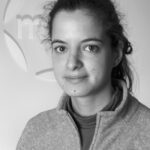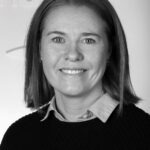In general, pesticides are used in order to promote more effective production of fruit and vegetables, but can be very harmful to people's health and the environment.
The goal of the project was to screen products on the Icelandic market for pesticide residues, compare the measured amounts in imported and Icelandic products, and to investigate whether there was a difference in the concentration of pesticide residues, heavy metals and nutrients in the exterior/skin of fruits and vegetables in comparison to their interior/flesh .
166 samples (fruits, berries, vegetables, salad, herbs and cereals) of Icelandic (42%) and imported products (58%) were screened for pesticide residues. In the sequel, the concentration of pesticides, nutrients and heavy metals in the skin and inside of products (n=44) was measured.
The results were that 49% of products on the Icelandic market contained pesticide residues, 61% of imported products and 31% of Icelandic products. However, their concentrations in samples were generally low and within the maximum permissible values in 94% samples. Fewer types of pesticides were found in Icelandic vegetables than in imported vegetables. There was a higher concentration of pesticide residues and heavy metals in the skins of fruits and vegetables compared to the contents. Then the skin of vegetables turned out to be more fibrous than the contents. In addition, Icelandic vegetables were richer in minerals and trace elements than imported vegetables.
Author: Kristín Edda Gylfadóttir
The project development of microalgae feed for fish farming, which was a joint project between VAXA and Matís and funded for two years by the Technology Development Fund, has now been completed.
The aim of the project was to develop VAXA products as ingredients for fish feed in aquaculture. Several experiments were carried out with the aim of examining the usefulness of Nannochloropsis microalgae as an ingredient in fish feed. In these experiments, 1. The shelf life of fresh algae was examined, 2. How can the cell wall of the algae be weakened so that it becomes digestible for fish but otherwise it is indigestible, 3. The effect of fish feed with algae oil on the growth and salmon lice infection of salmon fry, 4. Growth and absorption of fatty acids and Omega 3 in salmon fingerlings fed a diet with algal oil. 5. Calculator for the absorption of Omega 3 in salmon fry. The results of the experiments were positive in many respects and greatly improved VAXA's knowledge of the possibilities of using Nannochloropsis algae or products derived from it such as algae oil in fish feed.
VAXA uses the knowledge gained in the project to develop its products for use in salmon feed. Although Omega 3 fatty acids are present in various foods (mainly fish), salmon is considered one of the best sources of these fatty acids. The fish farming industry has been looking for ways to reduce their use of fishmeal and fish oil for salmon feed, which has caused Omega 3 levels in farmed salmon to drop. In this research project, for the first time, sustainable photosynthetic algae have been successfully used for the production of Omega 3 for salmon feed. The results of the project demonstrate the feasibility of this approach for the production of Omega 3 rich salmon feed. The good results of the project will help VAXA to market the algae oil from its production as an alternative Omega 3 rich ingredient for salmon feed instead of fishmeal and fish oil in the salmon feed of the future.
The report is closed.
View report
The workshop on value added processing of farmed fish in the Nordics explored options and assessed the feasibility of value added production in the region. It brought together 45 participants from various sectors, including salmon farms, sales and marketing, technical and processing equipment developers, research groups, and transport and freight companies. The project was supported by AG-Fisk and managed by a team of industry experts from Iceland, Norway, the Faroe Islands, and Denmark/Germany. The planning group then compiled a final report using a SWOT analysis to present the workshop's main conclusions. Presentations from the workshop are accessible in the report appendix.
The SWOT analysis concluded that the main positive factors for the Nordic salmon industry include favorable farming conditions that can provide steady delivery and the ability to build a strong brand in terms of origin and identity. A major strength identified for secondary processing in the Nordics is the strong demand for high-quality, sustainably-produced salmon. Other strengths include the strict farming regulations to minimize environmental impact and improve animal welfare, as well as the potential for vertical integration to improve transparency and control over the entire production process. Specifically, for Iceland the access to renewable energy is a major strength. Automation and technology access, with the use of water-jet robots to remove pinbones and automatic sorting, grading, and trimming providing opportunities for objective quality control and increased efficiency. Superchilling techniques were also identified as a potential advantage, allowing for longer shelf-life and a firmer product with less gaping. There were also opportunities for increased utilization of side products from salmon processing, as well as the potential for branded, value added products and better market segmentation.
The main negative factors include logistic and shelf-life limitations, unfavorable tariffs on trade, and high production costs compared to competitors. Major challenges identified specifically for Iceland are to maintain a steady, year-round supply of salmon and the distance to major retail chains. Logistics and transportation costs were also identified as important barriers for companies operating in Iceland and The Faroe Islands.
View report
Analysis of the Prnp gene is an important part of Icelandic sheep breeding. Certain genetic variations in the rubella gene give individuals increased resistance to rubella, while others increase susceptibility to the disease. Information about the genetic composition of Prnp in sheep flocks is therefore an extremely important tool in farmers' fight against the disease. The aim of the project was to increase the performance and reduce the price of riðügen analysis in Iceland. In the project, a total of 1,913 samples from around 150 farms were analyzed at Matís genetics laboratory. The support that the project received from the Development Fund for Sheep Breeding was crucial for Matís to be able to offer a competitive price to farmers, which resulted in almost doubling the number of analyzed samples compared to the year 2021. This genetic information will be useful for the breeding work of sheep breeding as a whole and will most likely lead to increased resistance to scab in Icelandic sheep.
View report
To strengthen the position of saltfish, with its long tradition, history and connection to Nordic livelihoods, it is important to strengthen the entire value chain, from producers and retailers, to chefs and consumers. The aim of the project "Saltfish delicacies" is to develop new or improved ready-made dishes based on traditional saltfish, and 16 participants from Iceland, Norway and the Faroe Islands are involved. The group consists of experts in saltfish processing and quality, cooking, food production, media and the travel industry.
This report describes the workshop "What is saltfish?" which was held in the house of the Menntaskólin in Kópavogur, September 28, 2022 in collaboration with Matís, the Menntaskólin in Kópavogur (MK), Grím Kokk, Klúbbs Matreiðslumeista and Icelandic saltfish producers. The goal of the workshop was to share knowledge from various sources, and look for ways to strengthen the position of salted fish in the domestic market, and about 40 people attended the workshop. Short presentations were given by Matís experts on the history, culture, effectiveness and dewatering of salted fish. Also about the knowledge and attitude of consumers towards salted fish and its consumption in Iceland. The sensory properties of salted fish were presented, and attendees had the opportunity to taste and compare two types of salted fish and two types of salted fish. MK culinary students then presented their ideas behind salted fish dishes, which were served on the table. After that, we worked in three groups, each of which discussed the following topics: "What is salted fish - can we call salted fish salted fish?", "How do we reach the young people?" and "How can the product range be increased?".
The results of the workshop showed that it is important to distinguish between what is truly salted fish on the one hand and salted fish on the other. Salted fish, usually lightly salted or overnight salted, does not have the same characteristics as salted fish, which is fish finished with salt and brine and then dry-salted even for weeks, which after dehydration gives this product unique properties such as a characteristic taste and firm texture. It seems that there are endless opportunities and opportunities for the saltfish. However, we need to pay better for the way of salted fish to the Icelandic market. Saltfish should really be to us Icelanders, on par with what Parma ham is to Italians, at least. To promote knowledge, respect and consumption of salted fish, it needs to be better known and made more visible, not least among younger age groups. What hinders chefs and producers of products is that it is often difficult to obtain fully prepared, properly watered salted fish domestically. Dewatering requires a problem, but often the facilities, time or knowledge are not available. We need to reach younger consumers and improve the reputation of salted fish in general. The name saltfish is not very appropriate, as it has a reference to salted fish and has a negative image due to its association with second class fish. Dehydrated salted fish should not be too salty. Perhaps finished, dehydrated saltfish should be called something other than saltfish.
View report
This report reports on the progress and main results of the research and innovation project "Value creation in Icelandic aquaculture", which was partly financed by the AVS Research Fund in the Fisheries Industry/Food Fund. In this project, an effort was made to reduce costs and increase the value of digestate production from side streams of aquaculture, where in particular attention was paid to reducing transport costs, by processing the digestate more, removing fish oil and water from it, which reduces volume and weight during transport. and gives the opportunity to work it into more expensive products.
Salmon farming in Iceland is growing rapidly, and if all plans go according to plan, salmon farming in the sea will reach 90 thousand tons within a few years. The resulting side streams could therefore exceed 20 thousand tons per year. There are also countless wildfires in Iceland, but big plans are underway in Ölfus, Vestmannaeyjar and Reykjanes, where there is discussion about the production of over 100 thousand tons of salmon.
Side streams in aquaculture are mostly divided into two categories, ie. K2, which is a fish that dies by itself in pens, and K3, which is offal that occurs during slaughter, as well as heads, spines and trimmings that occur during processing. Raw materials from K2 may not be processed for human consumption or feed for animals raised for human consumption, and therefore the markets for pet or fur animals must be considered. However, K3 can go into production for human consumption or in the feed of animals consumed by humans.
With increased fish farming, we can expect a large increase in side raw materials in the coming years, and it is therefore important to find ways to ensure environmentally friendly processing methods and at the same time to improve value creation in the processing of these side streams. In this project, at first glance, the production of flour and fish oil from these side streams, but such processing did not cover the costs. But the main reason for this was the high cost of transporting the raw material, which is mostly water, as well as the difficulty of storage due to rapid spoilage processes.
Therefore, the production of smelt was considered and the possibilities of improving value creation and reducing costs, especially during transport, were examined. Melta is a low-cost product, but by further processing it, extracting fish oil from it and then distilling 60% from the water, it would be possible to increase the value and reduce the cost of transportation to market.
The results of the project indicate that it is possible to process digestate in an economical way from side streams of aquaculture in this country and even create significant value by further processing the digestate into final products.









